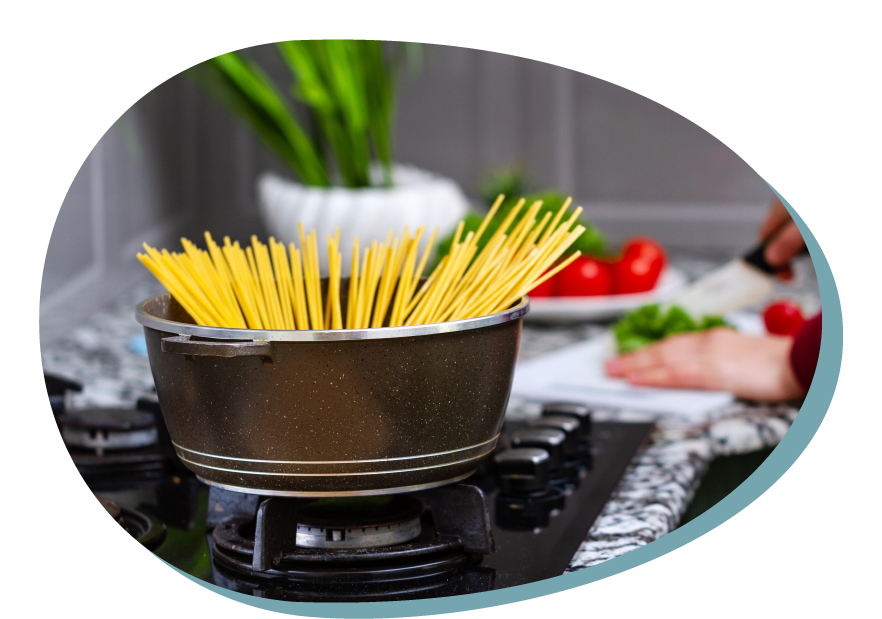Tender pasta
Language: English
Description
To see the difference between dried pasta and boiled pasta.
Scientific concept introduced
Change of state, (from solid to tender, flexible). Boiling water (steam).
Creative and critical thinking
To observe the changes in the pasta.
Mathematical reasoning
Measuring, proportions
Scientific thinking
Asking questions, conducting research- hypothesize, predicting.
Learning how to learn
Feeling of self-efficacy in learning. Motivation to learn and engage.
Additional
Taking xommon decisions, sharing ideas, communicate with others, following the safety rules and discipline.
Tender pasta
Overall aims
- To observe the change of properties with the temperature.
- To observe the process of boiling water.
Vocabulary – keywords should be understood
Pasta, water, steam, stove, pot, strainer.
Expected learning outcomes (operational aims)
- To boil water in a pot and wait until it boils.
- To pour pasta into the boiling water and wait until it changes to a tender consistency.
STEM skills – to which the learning unit is related to
CORE STEM SKILLS
- To create hypotheses
- Creative thinking
- Initiative
- To communicate processes
ADDITIONAL SKILLS
–
Teaching methodologies/activity outline
First of all, we have to prepare the material: a pot, water, pasta, a stove, and tomato.
Once we have all the materials we will put the pot on the stove and pour the water inside. The adult will turn on the fire, and now we will have to wait until the water starts to boil.
Once the water starts boiling, we can ask the children, “ Why is the water boiling”?.
Now it is time to add the pasta and wait until it is cooked. Take advantage of the children’s ideas to ask questions about the boiling process.
While the pasta is being cooked, ask the children to observe the steam that comes out of the pot. And ask them “How is steam created?”
Once the pasta is tender it is time to drain it with a strainer.
Put the pasta on a plate, add the sauce and you are ready to eat it!
Assessment of learning
Observation of process and live feedback (formative)
Equipment and materials to be used in learning unit (tools, ingredients etc)
Stove, pasta (macaroni, espagueti… ), water, pot, strainer.
Kind of setting
Kitchen
References – source
–
Tender pasta
1. Usefulness for STEM education – integrating content of different disciplines
Cross-curricular character of the resource

The range of S-T-E-M subjects included

The presentation of possibilities of including artistic activities (STEAM approach)

2. Expected learning outcomes
Consistency (links) with preschool core curriculum

Communicativeness of description

3. Methodology of teaching
Clarity, communicativeness of instructions for teachers

Meaningful learning – using practical life problems

Original idea

The level of ease in implementing the methodology to preschool age children

The level of ease in preparing necessary ingredients, materials and equipment needed

4. Sustainability
Ecological characteristics of materials/ results

Supporting healthy eating habits

Relation with local traditions of cooking (using local products)

Low ecological footprint

Possibilities of inclusion (respecting cultural diversity and food intolerances)

5. Class management
Using differentiated forms of work – individual, team work etc.

Individual work

Team work

Whole group
6. Time management

Short activity (10-15 minutes)

Medium activity (20-30 minutes)

Long activity (1 hour or more)

Very long activity (1 day or more)
PDF: https://www.printfriendly.com/p/g/u628BT

